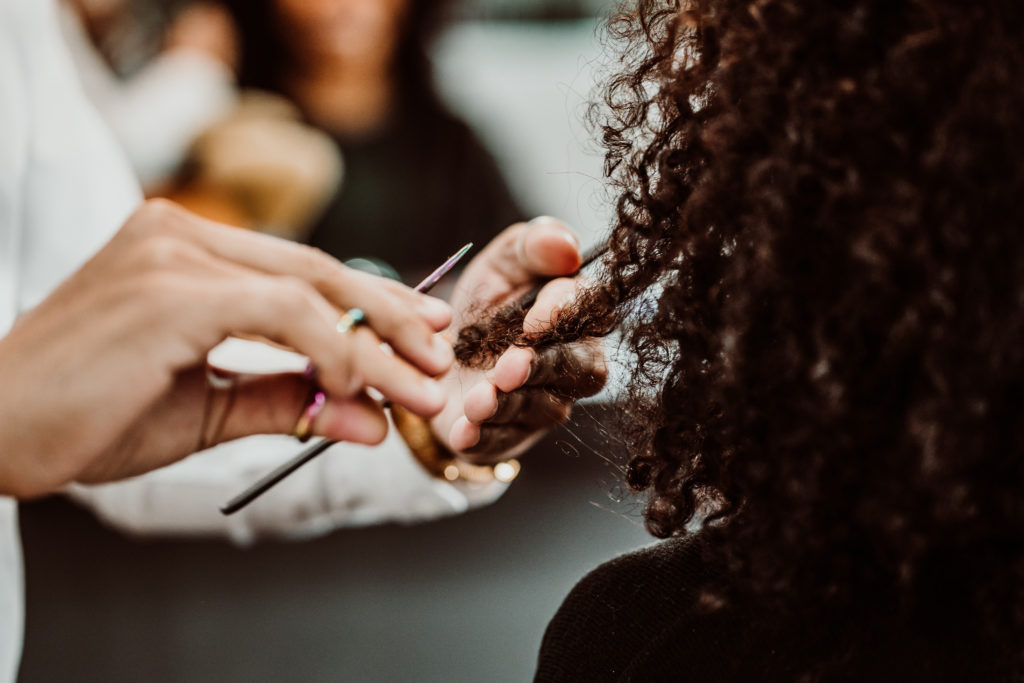
Learning About Textured Hair
Did you know that almost 70% of the world has hair that is identified as textured? This means that it’s becoming the global norm, and even though ladies with textured tresses spend the most money on hair care, they have the least number of options. For cosmetology students to be comfortable styling textured hair, they need to get to know the basics.
Nothing about the beauty world is one size fits all. Hair types are as varied as the personalities of the individuals themselves, and many times our hair has a personality of its own. The texture of a person’s hair affects the way it reacts to being cut, styled, and chemically processed. Textured hair reacts differently than hair types without a curl pattern, so if you don’t know how to work with it, it could be disastrous for you and your client. The basics of styling textured hair are important for cosmetology students to learn and understand. Unfortunately, many cosmetology schools don’t teach students how to work with textured hair despite how common it is.

How would you describe textured hair?
All hair has texture, so the term “textured” can be confusing. Textured hair is an umbrella term that describes hair strands that create shapes such as curves, spirals, zigzags, or waves; basically, hair that is curly, kinky, coily, or wavy. Textured hair has some kind of curl pattern to it and sometimes more than one curl pattern; it all depends on the person. Genetics is only one factor in how hair behaves, as many things, including the products clients use every day or the weather, can affect the texture of their hair and how it behaves being styled. Learning about different types of textured hair can make your work easy and fun. Here is some useful information:
- Did you know that naturally textured hair is more fragile than naturally straight hair? Curly hair is more porous, and many stylists agree that moisture is key. Wetting the hair by applying a detangling spray or leave-in conditioner will help to lay the hair cuticles down. Giving the hair this moisture allows for easier styling and helps to avoid breakage.
- Wondering which tools to use? Using the right ones is important because using the wrong ones can damage textured hair. Diffusers work great for styling and definition. Clips are perfect for sectioning off hair, which you’ll want to do when blowdrying. Many stylists suggest the “walk-up” method, going in small sections, and the “walk-up method again for brushing.
- Your hands can be the best tools. Hair is much less likely to pull uncomfortably or break when you’re using your hands instead of a brush or comb. Detangle using your fingers to feel your way along and gently massage out knots, using a serum or moisture spray will make quick work of any tangles you find. You can use your hands to style textured hair too, using your fingers to stretch and pull the texture out. Don’t be afraid to get in there, using your fingers and some product creates room for natural curls when styled.
- Learn what works for you. While many stylists will tell you that it’s best to cut textured hair wet, others say it’s best to cut it dry, and neither way is wrong. What matters when deciding which approach to use is how the client wears their hair most of the time and the amount of shrinkage their hair has. Shrinkage depends on the hair pattern, so familiarize yourself with different lengths of shrinkage and cut the hair dry, damp, or wet, accordingly.
- Get familiar with products made for textured hair, especially ones that moisturize and help you style. The reason that textured hair tends to be drier is that the oils from the scalp have a harder time working their way down all of those twists and turns. You want to minimize breakage, and dry hair means brittle hair. Use products that give hair back its moisture. As the strands hydrate, the curl pattern becomes more defined and hair is ready to be shaped.
The Bottom Line
As a hairstylist, you should be comfortable styling all four types of hair: straight, wavy, curly, and coily/natural. You don’t want to miss out on work or embarrass yourself. Building that skillset begins at cosmetology school, so it’s imperative to work on a variety of mannequins with different hair types, including textured hair types. With more and more curly girls deciding to rock what their mama gave them instead of wearing wigs, becoming proficient in styling all types of hair will give you greater odds of being successful and having fun in your craft.





